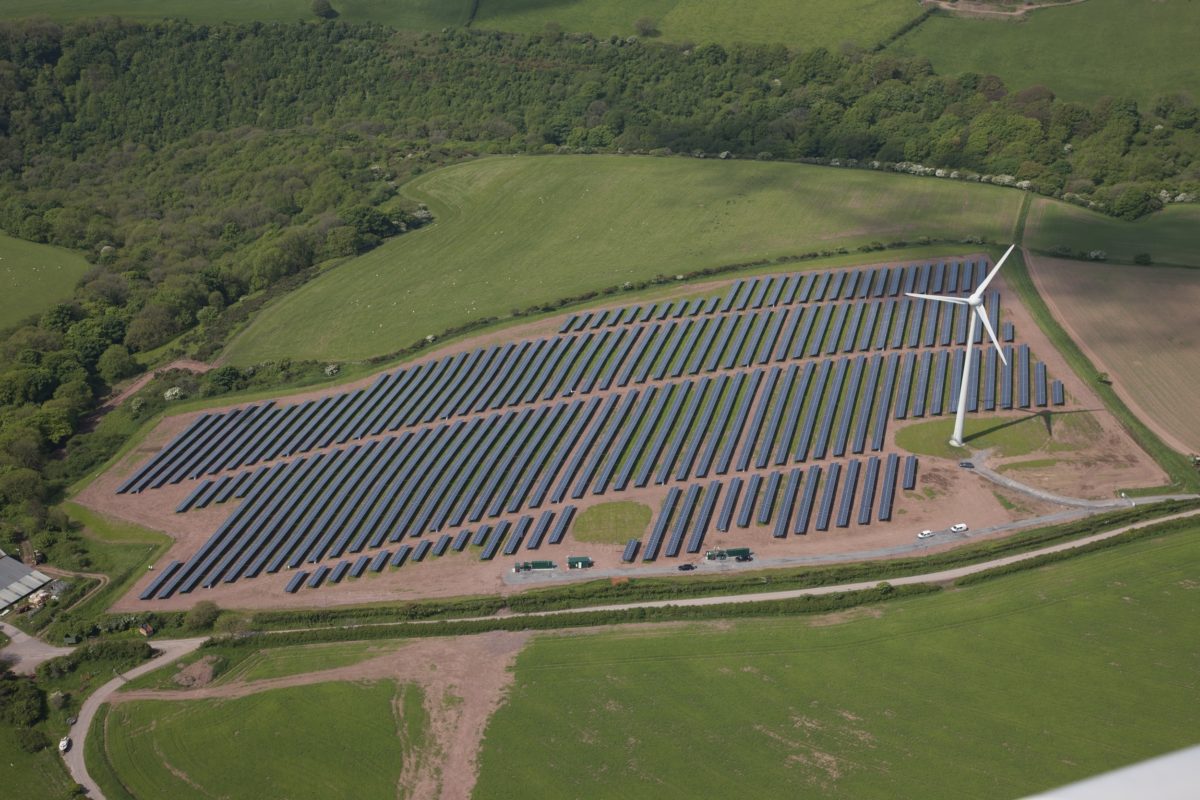Swedish energy company, Vattenfall has not yet attracted enough attention as a major player in the global PV market.
This, however, is expected to change in the coming years, according to Claus Wattendrup, vice president of the Solar and Batteries division at Vattenfall, which currently employs around 45 people and operates in all segments of the solar market, including storage.
Wattendrup openly admits that until a few years ago, Vattenfall was very skeptical about photovoltaics. But not only the company; he himself was also not convinced at the turn of the decade. “I looked at PV and thought, 1,000 full load hours a year with these prices. It's not worth it,”he says.
At the time, Wattendrup was mainly planning offshore wind farms. But then the rapid price decline began and today PV has reached the cost of electricity from onshore wind farms and will soon be below spot market prices.
This situation has led Vattenfall to reconsider its approach to solar. “We have to invest in photovoltaics,” he says today. “Photovoltaics will make the world race.”
In 2016, Wattendrup started implementing pilot projects at Vattenfall with a small team. The utility has since installed its first 4.9 MW solar park close to a similar sized wind farm in Wales.
After positive experiences from this and other projects, the official starting signal for Vattenfall's solar business was given in the middle of last year. Initially, the Swedish group will concentrate on its (north) European core markets of Sweden, Denmark, Great Britain, the Netherlands and Germany, explains Wattendrup.
In the latter two countries, the company has recently announced several exciting projects and is already partially implementing them. Particularly in the Netherlands, Vattenfall is carrying out many projects.
The local market for ground-mounted solar facilities is booming. In addition, the energy company operates many on-shore wind farms on land in the Netherlands. Vattenfall prefers to choose these locations for its solar parks, not least because the area is already pre-developed and there is existing grid connection, which saves on cost, Wattendrup stresses.
“In Germany, we have not built so many on-shore wind farms. That's why we are more likely to develop new projects here or seek to acquire project rights,” he adds.
The group has recently announced its intention to participate in Germany’s solar tenders, and the ongoing joint tender for PV and on-shore wind projects with the deadline of April 1, 2018.
Wattendrup admits that “with the price level that is reached in the tenders, you're not getting rich. Due to the sharp drop in prices, we could be more ambitious in Germany,” he says, and considers that an adaptation is urgently needed, as PV and also wind power offer great potential for Europe over the coming years.
With these falling prices, the PV market is becoming more professional, Wattendrup believes. “I also see ourselves as a professional and long-term oriented player in the future.”

Image: Vattenfall
Meanwhile, the energy group has also begun investing in start-ups via its Greenfield platform. One focus is on young companies that deal with big data.
Most recently, Vattenfall had invested €3 million in Solytic. The Berlin-based start-up is an example: it aggregates and elaborates large amounts of data with the help of the Internet of Things and artificial intelligence.
Vattenfall acts mostly as a partner of these young companies, becoming their customer and assisting with product development, explains Wattendrup.
Even though he now assumes the triumphant advance of PV, he does not want to rely solely on being right this time. “We will continue to expand the business of on-shore and off-shore wind turbines,” he says.
An exciting question for the future will be whether it is more important to operate large-scale solar parks or to evaluate their data. Wattendrup is clear in this case: “Data-driven platforms are the future.”
While Vattenfall is now catching up with leading competitors in the solar sector, Wattendrup sees the energy company “rather ahead” in terms of storage development. For example, Vattenfall has already gained experience in a number of large projects, including one in which it integrated a 22 MW/15 MWh battery storage system into a 220 MW wind farm in Wales.
The experience from the project also showed that “batteries will not be the solution, as they can only provide a small contribution,” according to him. Given the current big capacities of the energy systems, storage will only be able to compensate for short time fluctuations.
He considers power-to-gas technologies to be more important for stabilizing power generation in the context of renewables. At the same time, he also sees a need for improvement at the political level. “The current regulation is not designed to combine renewable energy and storage,” he says.
As for the further development of PV within the power utility, Wattendrup comments, “I always wish that things would move faster.” But at least the €100 million for the PV market at Vattenfall are now “earmarked,” he further says.
The energy company intends to spend the money in 2018 and 2019 on decentralized and ground-mounted projects – above all in the Netherlands and Germany. How much can be done also depends on which projects will be realized with partners.
Whether Vattenfall will eventually venture into sunnier climes for its solar business, Wattendrup could not yet say. He is currently looking more closely at the French market. There Vattenfall has a branch and he could imagine market entry. Countries like Spain, Italy, Greece or Turkey, on the other hand, are even further away, although not uninteresting, Wattendrup adds.
Wattendrup ends with a nice anecdote: His name means drops of water in Swedish. And true to the motto, ‘Steady drops hollow the stone', he drives undeterred the PV business in a company originally founded as a hydropower specialist. He is still skeptical, however, about the combination of both elements.
Commenting on recent developments for announced off-shore PV projects in the Netherlands and Belgium, the experienced off-shore engineer says, “Given the waves and corrosion, I cannot imagine how this would work.”
He was initially similarly skeptical about floating PV projects in general, but has since seen and evaluated his initial experience with these floating PV technologies, and is now more positive. He has been wrong with his assessments in the past, and has learnt the lesson.
This content is protected by copyright and may not be reused. If you want to cooperate with us and would like to reuse some of our content, please contact: editors@pv-magazine.com.





2 comments
By submitting this form you agree to pv magazine using your data for the purposes of publishing your comment.
Your personal data will only be disclosed or otherwise transmitted to third parties for the purposes of spam filtering or if this is necessary for technical maintenance of the website. Any other transfer to third parties will not take place unless this is justified on the basis of applicable data protection regulations or if pv magazine is legally obliged to do so.
You may revoke this consent at any time with effect for the future, in which case your personal data will be deleted immediately. Otherwise, your data will be deleted if pv magazine has processed your request or the purpose of data storage is fulfilled.
Further information on data privacy can be found in our Data Protection Policy.